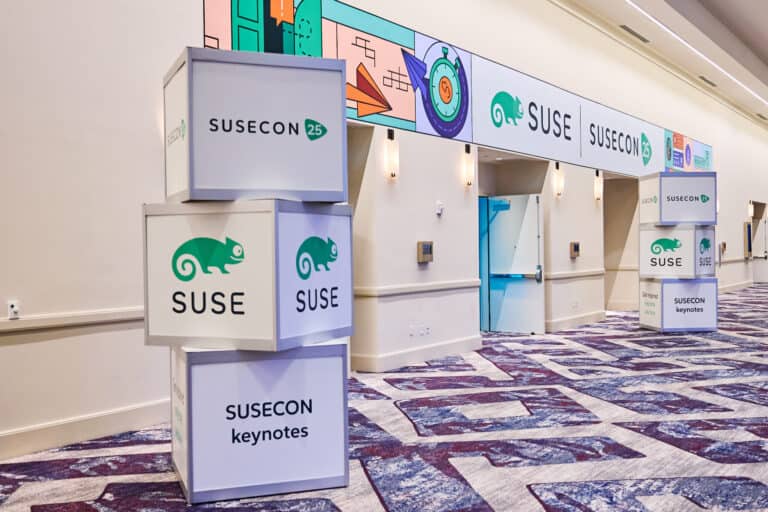At SUSECON 2025, a diverse set of updates were announced around Rancher Prime, SUSE’s container management solution. Remedies for legacy VM lock-in and SAP integrations are the main innovations, though there’s plenty more.
Organizations often wish they can move away from their legacy applications but are failing in this pursuit, SUSE highlights. For that reason, it is offering what it calls a cloud-native “off-ramp”. During the first keynote at SUSECON, CEO Dirk-Peter van Leeuwen emphasizes the need for this exit route from legacy. According to him, IT consolidation has led to an “erosion of choices, vendor lock-in and increasing costs.” Time for change, then, and this will require some effort on the part of end users.
True modernization
SUSE Virtualization is intended to help resolve this issue (from now on, SUSE wants to be clearer in its naming scheme, leading to SUSE AI being its AI offering, SUSE Virtualization for VMs, et cetera). Version 1.5 introduces SUSE Certified Storage, with certifications for Dell, NetApp, Oracle, and Portworx (from Pure Storage).
Certain industries struggle more with modernization, such as finance. That’s why SUSE is certifying workloads on Rancher Prime to ensure they too can make the jump from legacy to cloud-native. The latest of these certifications involves Temenos Core, a prominent digital banking platform used by many financial institutions. The certification should prevent friction in the move from the old to the new.
SAP integration
Another major announcement revolves entirely around a new chapter in the partnership between SAP and SUSE. The two go back a long way: back in 2002, the two parties were already collaborating. Now, SUSE is chasing an improved hybrid cloud experience with ‘SUSE Rancher for SAP applications’. As mentioned, SUSE wants to be a lot clearer with naming, so this solution is exactly what the name suggests.
Those facing restrictive compliance requirements are now offered a turnkey platform with this solution. SUSE say all the essentials are in place already with the offering. For example, Rancher for SAP applications also includes the SUSE Rancher Kubernetes Engine (RKE2), Linux, databases and other critical components. To emphasize the scalability of this product, SUSE notes that every use case from the smallest telco deployments to large multi-cloud environments can leverage the new solution without too much preamble required.
Other innovations
For developers, SUSE Rancher Prime is also improving. The newly introduced SUSE Private Registry is based on Harbor. Harbor sounds like a logical choice with lots of positive feedback from the open source community. SUSE’s targeted offering should excel in air-gapped environments, where drop-in, proven solutions can be a lifesaver.
Finally, SUSE is introducing what it calls DevX Validated Designs. With these, the company wants to help development teams manage their software lifcycle better. The key here is composability: not every development process runs the same way, and each team can set up workflows according to their own wishes and requirements.
A practical example is a validated design that combines SUSE Base Container Images with tools for managing source code and build actions. Examples of said tools are SDKs for programming languages, GitLab, or Gitea. Rancher Fleet connects to this combination for continuous deployment toward RKE2 or K3s clusters. A single Kubernetes cluster is sufficient to make the design work, which can be used for experimentation without affecting other clusters. Naturally, SUSE also points to SUSE Observability and SUSE Security to debug such a cluster.
Also read: SUSE acquires Dutch observability platform StackState
